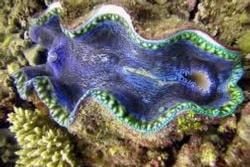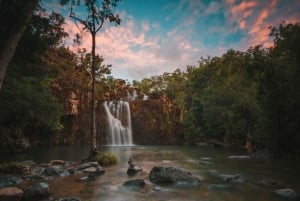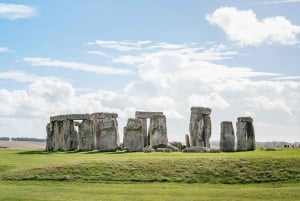The Great Barrier Reef, A living world!
One of the seven natural wonders of the world, the Great Barrier Reef is an incredible place to experience. The experiences include under the water (SCUBA diving and snorkeling), on the water (whale and dolphin watching) and aerial views, among these are the bird life above, around and on the reef which includes 40 species of sea birds and approximately 160 species of shore birds. Having over 2,000km of reef with over 400 types of coral the Great Barrier Reef is the only living thing visible from space. There are thousands of different animals living in the reef and that adds to the thrill and excitement of visiting it, you could see everything and no two visits will be the same, every visit is totally unique. The thousands of colours, shapes and sizes will bring you into a world of fantasy and the incredible way the animals of the reef live is mesmerizing. It is for this reason, no doubt, the reason that the great family movie ‘Finding Nemo’ was based on this reef and the animals in it.This ancient wonder is somewhere between 6000 and 9000 years old and shows many of the changes over time.
Fish: The Great Barrier Reef is home to approximately 1,500 species of fish. Among these fish are fish of every all different colours, shapes and sizes. Some of the fish of interest along the reef include:
Potato Cod
The potato cod is one of the largest fish on the reef and one of the friendliest fish too! They are very curious and will come up to divers confidently to discover who and what the divers are. They commonly get used to being fed and if fed often will harass and follow divers for a feed. They have been hunted to extinction in many other areas of the world and are endangered here but now protected by laws in Australian waters and common to see for divers. Like many fish they change genders throughout their lives, they start out life as females and develop into males later in life.
Clownfish (famous as ‘Nemo’ from finding Nemo):
The clownfish has a mutually beneficial relationship with its anemone in that it eats small animals and parasites that could potentially harm the anemone. In return, the anemone produces a poison which the fish are protected from by a mucus on their body (or a genetic evolution), providing them with a safe refuge.
Surgeon Fish (Tang)
These fish are among the most popular in the world and are found in pairs or small groups. Males court aggressively until both male and female spawn while swimming rapidly upwards, releasing both sperm and eggs to be fertilized together and hatching in 24 hours. When becoming ready for spawning the fish will change from a deep blue to a lighter blue. These fish are commercially collected as bait even though when handled they can erect spines on their back which can cause deep cuts and handling should be avoided.
Coral Trout
These yummy trout can be found on the Great Barrier Reef too. Living up to 16 years these fish can get pretty large and very pretty. They always have two or more rows of teeth for eating smaller fish and spines on their gill covers to protect their gills. These fish are very popular tucker (food) and come in beautiful colours.
Maori Wrasse
Among the largest of the fish in the reef these fish can reach up to 2 meters. These fish can be seen by themselves, in pairs or in small groups and are usually very interested in divers. They are very gentle fish and sometimes will approach a diver, allowing them to touch the fish. These fish are endangered due to detrimental fishing techniques in catching other fish, loss of food source, due to fishing and illegal capture for retail among many human related causes. The fish are struggling to gain numbers again because their sexual maturity age is so late (at 5 to 6 years). Another interesting thing about the Maori Wrasse is that it also changes gender, like many other fish, however the trigger to change gender is unknown and the lifespan of a male is approximately 5 years shorter than that of a female.
Sea horses and sea dragons
These are fascinating little animals to watch under water. Included as fish, sea horses and dragons are actually very unique. Like their physical appearance, many things about the sea horse are unique also, especially the parenting habits.
Fish wash stations
The ‘whale wash’ from the kid’s movie ‘shark tale’ is a perfect illustration for this concept. There are many fish and shrimp species that clean other aquatic animal at a specific spot. It is a mutual understanding that the cleaning fish/shrimp does not get eaten and the animal receiving the clean gets cleaned of external parasites. It is one of many mutual relationships on the reef. The animal in need of a clean will swim into the cleaning station area and open its mouth, waiting to be cleaned. The cleaning fish or shrimps will clean the animal, often including the mouth and gills. The animals on the Great Barrier Reef that use the service include sea turtles and larger fish.
Corals
Corals are made by tiny little organisms called polyps. Polyps make the coral and live on it. They reproduce asexually, but some can spawn as well. They create copies of themselves, which is a fast, and mostly effective way but once a year in summer, when currents are at their lowest, the polyps all spawn at once. Because coral is an animal and not a plant, it cannot generate food from the sun on its own. Most corals use microscopic plants called zooxanthellae. They are one of approximately 450 species of algae on the reef. These plants convert sunlight into food for the coral using photosynthesis. Corals can either be ‘hard’ or ‘soft’, the great barrier reef has both of these types with approximately 360 species of hard coral and a third of the world’s population of soft corals. Climate change is having a harsh effect on the corals of the Great Barrier Reef. As the temperature gets too high the corals are forced to expel their zooxanthellae that they have living inside them for photosynthesis. They cannot allow for the zooxanthellae to return until the temperature decreases again. If they are gone too long the coral begins to ‘bleach’, turning white and this can become irreversible. Eventually the coral dies. The Great Barrier Reef is very sensitive to temperature, a change in a few degrees colder or hotter could kill the whole reef.
Medusa
Jellyfish are the dominant form of medusa on the reef. The body of medusa moves itself through the water by allowing it to fill with water via the mouth then contracting to expel the water from the mouth, propelling the animal backwards.
Jellyfish
Jellyfish on the reef should be avoided as they can potentially be dangerous and very painful and can in fact be fatal. Each species varies a lot in terms of size, shape, length of tentacles and amount of tentacles.
Molluscs
The Great Barrier Reef is home to approximately 6,000 species of molluscs. The phylum Mollusca includes a very diverse group of animals from snails to octopus. The basic body plan for all molluscs is the mantle, at the top of the body which is responsible for the shell (if one is present), the body and a foot. Many organisms on the reef of this phylum don’t possess the characteristic shell such as the nudibranch which is a group of sea slugs.
Gastropoda
These include terrestrial, marine and fresh water animals such as snails and slugs. The species that do have shells have spiraled shells and all species walk on their singular ‘foot’. However, the most spectacular of these are those without a spiraled shell, they are those without a shell at all. It is thought that somewhere in evolution the nudibranch lost their shells. This group is a brightly coloured group of sea slugs that come in many different shapes and sizes and so many of them (for example the Spanish dancer) can be seen by you on your trip to the Great Barrier Reef. The beautiful and brilliant colours to these animals exhibit their defense and attack mechanisms for example, bright colours warn of other animals, suggesting that it is poisonous and feathery growths from their back could aid in the capture of food.
Molluscs don’t all need to have a hard shell or none at all, some, such as this bubble snail (also from gastropoda), have a soft poorly developed shell that can be very fragile. These snails can be very colourful and are no doubt where the Aboriginals got inspiration for their art works. The snail in the left image is pictured on an orange peel to illustrate its size.
Bivalvia
Many shells you will find along the beaches will be from a bivalve animal. They have a shell that consists of two parts, so unlike others in this phylum, they have two mantles. Some bivalves swim and some attach themselves to rocks in the water. Bivalves such as oysters will spend periods of time above the water in low tide as the water level drops below the point at which they are attached. This time out of water doesn’t damage them as long as they do return to the water and don’t dry out. They are one of the simpler organisms and are considered to have evolved little in compassion to most other organisms around today.
Bivalves are farmed and used for multiple purposes, both in Australia and worldwide. Some of their uses include food and pearls, both products are farmed from oysters. A trip to the reef wouldn’t be compete without witnessing one of the giant species of clams in this family and trying some of the local shell fish at a sea side restaurant.
Cephalopoda
Cephalopoda is a group of predatory animals including the octopus, cuttlefish and squid. It is a group that includes both animals with shells and some animals that have lost their shell through evolution. They have tentacles or arms with which they use to capture food and move about the ocean. Cuttlefish and squid both have a means of support internally, unlike the octopus, which also has 8 tentacles opposed to the 10 possessed by cuttlefish and squid.
Blanket octopus
Included in cephalopoda is the blanket octopus, which can be found on the Great Barrier Reef but if rarely seen. This beautiful looking octopus has thin webbing between its tentacles which gives it its name the ‘blanket octopus’ but the most intriguing part of these animals is not their beauty, but their reproduction. The females in this species are approximately 2 meters long, with the males only a couple of centimeters. During mating the males lose a leg to her as it climbs into her to fertilise her eggs and he dies shortly after. Another difference in these octopuses is their defence. The males and young females tear off the tentacles of the man-o-war jellies and use them for defence purposes.
Echinoderm
There are approximately 600 species of echinoderms living on our Great Barrier Reef, including starfish and sea urchins and other animals with no internal skeleton. Many countries eat a large variety of echinoderms however Australians rarely cook with these animals. Australia has all of the classes of echinoderm in its Great Barrier Reef.
Starfish
Starfish can be recognised by their radial symmetry and number of points, which are always multiples of five. Some exceptions exist, including the Protoreaster with 6 or 7 and individuals that have had injuries which can cause the arms to split into two. The ‘monster’ of the starfish world, the Crown-of-thorns that eats away at corals is contrasting to all of the reefs other beautiful starfish with brown to black spikes that cover its body. Starfish have suckers in a groove on the underside of each arm which allows them to cling to walls, making them possible to see even if you aren’t diving down to the ocean floor (and you wouldn’t want to miss seeing one if you come all this way).
Sea cucumber
Sea cucumbers are bilaterally symmetrical, as their name suggests, they usually look a lot like a sea cucumber. The sea cucumbers have little tentacles around their mouth to assist in eating. Range in size from a few centimeters to a couple of meters these animals are very diverse. Although relatively simple animals they do possess an effective defensive strategy; when attacked they secrete a toxin from their stomachs. Although most are dull coloured all are exciting to see of the reef and there are a few species that are brightly coloured.
Feather stars
Like the starfish, the feather stars have a radial symmetry but can have many more arms ranging from 5 to 200. Unlike most of the other echinoderms their mouth is on top of their bodies. These appeared among fossils that some believe to date back 300 million years. They are most active at night but because they often favour shallow waters they can be seen easily through the day. They are an interesting sight and if you take a close look you may find another smaller animal hiding among their feathery arms.
Brittle stars
Closely related to star fish, brittle stars have five arms but are very flexible and have smaller central bodies than that of the starfish. They have the ability to grow back arms or even divide into two if the animal is split into two halves with enough central body to each
Sea urchins
Like the above mentioned stars, sea urchins also have radial symmetry in their usual sphere shape. Their bodies are covered with spines which are often sharp but can be thick and rounded at the end. When diving you are likely to see the needle –spined urchin, they are very intricate but avoid stepping onto one as spines break easily and cause pain and swelling in the affected area. Many small animals hid in the spines of sea urchins, particularly juvenile fish that are somewhat helpless.
read more ... The Great Barrier Reef, A living world 2














